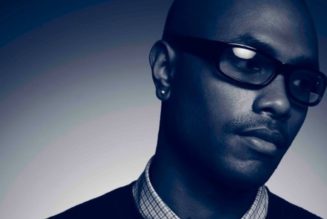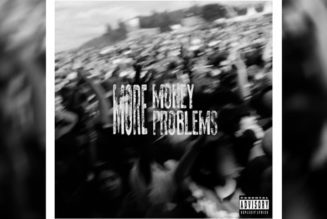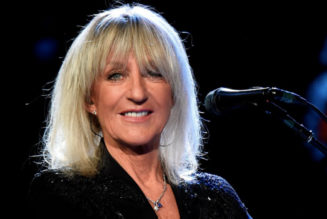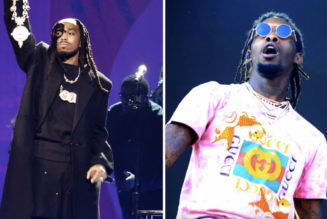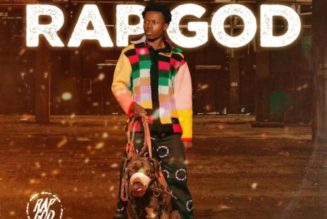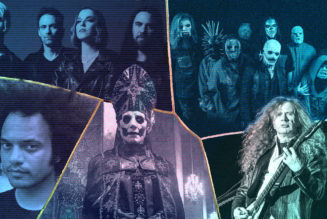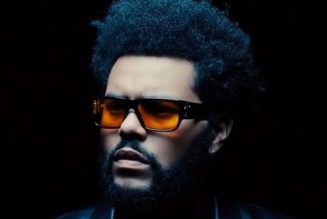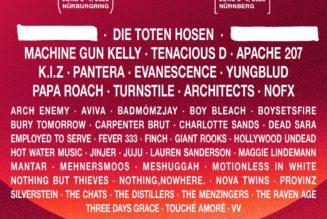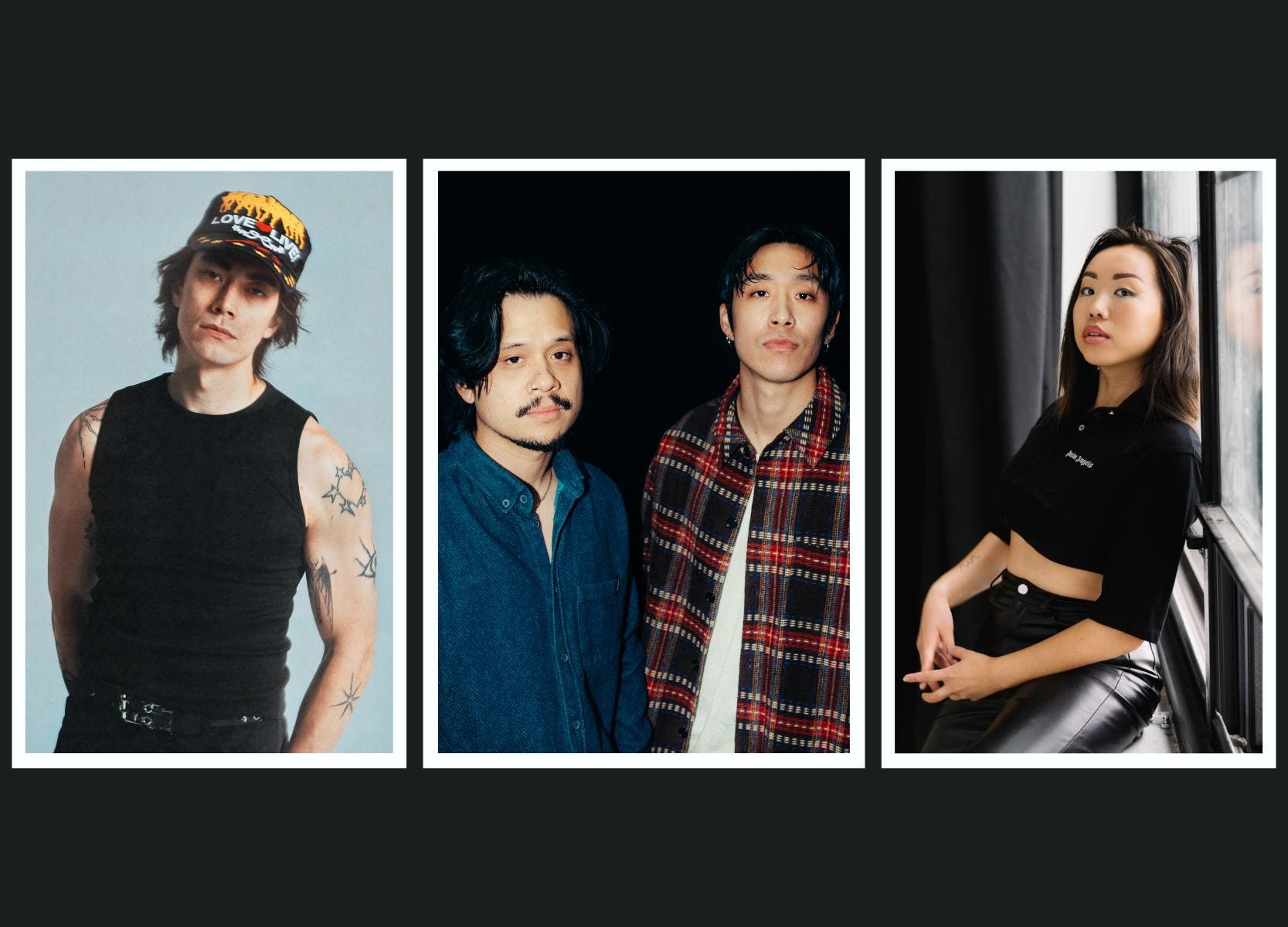
The gravity of Asian American and Pacific Islander Heritage Month (AAPIHM or AAPI) always weighs strong, especially since 2020, which saw a rise in anti-Asian violence. May marks a time to honor the achievements and contributions that Asian and Pacific Islanders have made in the United States, whether it’s through music or other avenues.
Asian American and Pacific Islander Heritage Month began in 1977 when a resolution was introduced to the House of Representatives. However, the celebration was only advocated to last 10 days. In 1991, George H.W. Bush signed a bill passed by Congress to extend the celebration to a month, deeming that the honorary celebration would last for that time frame in May 1991 and May 1992. Later, May was officially designated as Asian American and Pacific Islander Heritage Month in 1992.
Here, Forbes recognizes ARMNHMR, Helang and Juelz, three dance music acts who have left their mark on dance music.
Lisa Kocay: What does Asian American and Pacific Islander Heritage Month mean to you?
ARMNHMR: “We think AAPI means shining light on a group that contributes so much to the world. Asians aren’t just a specific group of people who fit into a mold. We’re not just engineers and doctors. We’re also artists, social workers, designers and everything in between. It’s our reminder that we all have a story.”
Helang: “I think it’s very significant that we’re highlighting this. It means that people like me have the opportunity to really showcase our skills, our talents and our dedication to our work. It’s obviously not talked about enough, but it’s nice that we have something like this to highlight our skills. It’s the chance for us to really speak up and I think break the barrier of being very kind of reserved, like how we typically are, because in the culture that I grew up in, we’re taught not to show our feelings or emotions and kind of keep things to ourselves. So I think this is a really great chance to break that barrier and showcase what we have to offer.”
Juelz: “My heritage and the culture I come from is something that’s always very present to me, but this month is interesting because I’m not used to other people giving it much thought. Usually, the meaning that my background has is something that is more private, so it’s cool that other people are curious to know what that means to me. I’m happy that the AAPI community has been getting this spotlight increasingly more over the past few years.”
Kocay: How do you identify within the Asian American and Pacific Islander community?
ARMNHMR: “I see ourselves as one big family. Being born and raised in Los Angeles, I’ve had the blessing of being part of a large melting pot of Asians. We aren’t one size fits all. As a Filipino, I saw myself as one piece contributing to the AAPI community.”
Helang: “I’m a child of first [generation] parents. My situation is a bit unique because I was born in Chicago, so I was born in the States, but then when I was eight years old, I moved to Shanghai with my family, and I actually went to school there. I spent all my elementary school years there until middle school when I moved back to the U.S. So it was a lot of back and forth, and it shaped me into who I am today, like being bilingual and everything.
“The whole process of growing up, I had a lot of, I guess you could say, identity confusion. I know that even Asian Americans who don’t have that situation still have the same kind of identity crisis applied to them. So I can totally relate in that sense, but I think that helps shape who I am and my identity today. It makes me very proud of who I am and where I come from, and [it] helps me put things in perspective because I spent a lot of time in two completely different cultures growing up.”
Juelz: “Coming from a half-Chinese, half-European background has always been an interesting experience because, in the past, I’ve felt like I didn’t really belong here nor there. But in more recent years, I’ve realized just how many hapas [someone of multiracial ancestry] there are out here and that it really is within itself an entire community that I love being a part of and an identity I wouldn’t trade for any other. Although we all come from pretty different backgrounds, I feel like in North America, there is an especially strong sense of unity specifically among American/Canadian-born people with East Asian backgrounds. Historically, being grouped under the same umbrella has been problematic, but it feels like we’ve collectively embraced it in an ultimately positive way that is unifying.”
Kocay: What are you most proud of with your heritage and culture?
ARMNHMR: “I am proud of the values Filipino culture has taught me. We are people who are scattered all around the world but thrive because of our culture [that’s] built upon hospitality and kindness.”
Helang: “I think it’s the fact that we have a lot of very old-fashioned traditions, and we are very big on family and putting dedication and hard work into the things that we want to accomplish. I pride myself on my drive and motivation to achieve what I want, and that’s definitely part of my upbringing. I get that from my parents. Through the ups and downs, I was able to kind of shape my own identity and perspective around it. So I think that that’s definitely something I’m super proud of. And like I said before, we’re big on family, like gatherings. So when I go back home to China to visit my relatives, we’ll have a full on sit down meal with like 30 people all together. It’s those customs and traditions that we’ll always honor no matter what.”
Juelz: “Everything. I think the contributions the Asian community has made to society are huge, and I find a ton of pride in that. Food and music are two aspects that especially stand out to me. To see the impact and visibility of Asian music and food continue to grow across the world makes me so happy.”
Kocay: What are some of your favorite cultural traditions from your heritage?
ARMNHMR: “One of my favorite cultural traditions, I would have to say, is ‘Kamayan.’ It is a huge feast set on a bed of banana leaves for special occasions. Everyone eats with their hands and in extremely close proximity to one another. Instead of worrying about etiquette, the moment boils down to just the essentials—good vibes with the people you care about the most.”
Helang: “So I’m Chinese, and some of my favorite traditions are definitely receiving red envelopes during Chinese New Year and enjoying all the different unique types of foods during each holiday. So, for example, we have the Moon Festival, which is where we share moon cakes with our family members. Then we have the Spring Festival. During the Spring Festival, we would have rice dumplings. I think a lot of these holidays share a similar core meaning, which is to spend time with your family, make sure you’re treating each other well, honor the older generation and all that. It’s pretty interesting how all these foods that we use to celebrate these holidays are pretty different from each other.”
Juelz: “Going for dim sum or to the congee house for brunch with my family, Lunar New Year, Full Moon festivities [and] going shopping with the family are big ones. Same with having big dinners at king crab restaurants. My family has always been really big on king crab for some reason, but [I’m] not complaining.”
Kocay: Who are some Asian American and Pacific Islander artists who have uplifted you?
ARMNHMR: “While there have been so many inspiring individuals over the years, I would have to say mine would have to be Jo Koy, Pacquiao and Bruno Mars. As a Filipino, it was inspiring to see someone short and dark like me shining bright and being themselves.”
Helang: “I would say definitely Qrion. She’s always been an inspiration to me. I love what she’s doing with her work, and her whole presence is really inspiring. It feels very relatable for me, personally. Also SOHMI, for sure. I’ve never had the chance to meet her, but I love what she’s doing with her work as well. I literally just found her, I think, on Instagram or something. I recently met this girl called Shubostar. We played a show together. I love her music, and her stage presence during her set was amazing. I think she’s amazing.”
Juelz: “[There are] so many talented dance music artists amongst this community, and although you could consider them contemporaries, they still inspire me. To name a few: Dabin, Peggy Gou, Knock2, IsoXO, Mr. Carmack, Jai Wolf, ARMNHMR, Manila Killa, Montell2099 and ARYA. Lately, I’ve been taking a lot of inspiration from Japanese artists and music from various Anime. I also really appreciate what K-pop artists are doing for the visibility and representation of people with Asian backgrounds in music.”
Kocay: How do you use your platform to support other Asian Americans and Pacific Islanders?
ARMNHMR: “We just want to show that it can be done. Prior to us becoming ARMNHMR, all I knew a Filipino could be outside of the medical industry/law was a singer, fighter and comedian. We wanted to show the world that we are ordinary people who are just happening to pursue the extraordinary.”
Helang: “I think one simple but most effective way that I’m doing this is just to speak on it more, like when I make posts. I do this [Instagram] reel series where I’m giving people deejay or rave advice. I would always be mindful of sprinkling in, ‘Okay, as an Asian American artist, I am proud of the work I’m doing, etc.’ It’s not exactly worded like that, but [it’s] just being active about putting that into things I’m talking about at all times. And also, this might sound silly, but I put the Chinese flag in my Instagram bio because that’s just a very subtle way of showing that I’m proud of where I come from.
“My name Helang actually is Malaysian. So translation for Malaysian is an eagle. It’s not Chinese, but I think that’s still a great way to represent the Asian culture and be like, ‘Okay, I’m proud of where I come from.’ Obviously, I picked the name because it resonates with my sense of personality and brand, but that’s just a good way to represent AAPI.”
Juelz: “I think naturally I’m more inclined to like an artist when I find out they’re Asian because it’s like, ‘They’re just like me [for real].’ I’d say that’s most notably reflected in the music I play out when I’m deejaying—giving Asian artists a bit more representation on the floor.”
Kocay: Who are some Asian Americans and Pacific Islanders you would like to highlight?
ARMNHMR: “I would love to highlight the amazing AAPI deejays out there who are killing it. Sabai, Elephante, Manila Killa, Dabin, JVNA—the list goes on. We’ve all seen each other’s careers flourish, and it’s been great to grind it out all together.”
Helang: “I think the three women that I mentioned before for sure. They’re all pretty unique and different from each other, which is cool.
“I want to add Hiroko Yamayura to the list of women artists who inspire me. Ms. Mada [is also in] my list of artists.”
Juelz: “I’m not one to pick favorites, but any of the artists I listed above are absolutely worth checking out.”
Kocay: Is there enough representation of Asian Americans and Pacific Islanders in dance music? If not, what should be done?
ARMNHMR: “I don’t think there is enough. Everyone has a story to tell. The more we have, the more everyone benefits. I think it comes down to having the courage to pursue what makes you happy. Easier said than done, though. We’re all taught to pursue goals that are secure but aren’t taught to pursue the ones that are a perfect fit.”
Helang: “I definitely don’t think there is enough representation, but I think we’re making small moves incrementally to get there. And I’m really happy to see that because each year, I definitely see more and more AAPI artists pop up on my radar. And then every time I listen to their music, it’s always wonderful. I think a part of that probably comes from our background and our upbringing because I think making art is a very vulnerable thing to do. And so, in our cultures, we’re taught to shut that out. It’s kind of generally speaking. It’s important to find ways to break that barrier, and that’s why I’m here. That’s part of what I’m here to do.”
Juelz: “With my lane of electronic music, I actually see a lot of AAPI representation, and I love it. On the more mainstream side of things, it’s still too many white dudes. I think at all levels, there are things that can be done to bring more representation from listeners and fans continuing to dig and find Asian artists they like and telling promoters to book more Asian acts. Talent buyers being conscious of the ripple effect they can create by diversifying their lineups and pushing the norms of what a fairly represented lineup actually looks like. Same goes for streaming platforms doing the same in their editorial playlist curation, given how impactful it is for artists to be ‘playlisted’ these days. There’s zero shortage of talented and deserving Asian artists in dance music, so there’s really no excuse.”
Kocay: How has your heritage shaped the person you are today?
ARMNHMR: “My Filipino heritage has taught me the value of grit and hard work. I can only speak for myself, but I am a fighter because of my heritage.”
Helang: “The way I grew up and kind of both cultures is pretty…it was pretty hectic, to say the least. But how it has shaped me today is my Chinese side of me helped me learn how to be persistent, be hardworking and stay in my own lane. That’s what we kind of pride ourselves in, where we like to be pretty independent. We just focus on the thing that we want to achieve and kind of mind our own business. I definitely pride myself in that, and that’s shaped a big part of who I am today. But the American side of me is helping me embrace my flaws, like embrace my flaws openly, and be open with my vulnerabilities, my emotions and self-expression. Self-expression is super big for me nowadays. That’s something that I don’t think I would’ve ever learned if I were to say grew up in China the majority of my life, per se. So I think having a balance of both of these sets of qualities shapes me who I am today.”
Juelz: “I really do feel like coming from a minority cultural background in general gives people a much more encompassing understanding of the world—it certainly has for me. I feel like I’ve always been relatively open minded as a result of coming from two completely different cultural backgrounds. It’s also allowed me to make connections with people who have helped shape who I am today.”
Kocay: Do you have a message you would like to share during AAPIM?
ARMNHMR: “The world needs your talents and skills. Shine bright and pursue the things that make you feel alive because everyone benefits from it in the end.”
Helang: “I would say vulnerability is what makes us stronger, and it’s okay to express ourselves. Those artists like me, or just any artist out there in general, if you express your vulnerability through art, then keep on doing that because it’s such a powerful thing to do. There are a lot more people out there than you realize who will resonate with that, and they will gravitate towards that. So self-expression is key. I want to add to that, voicing yourself and knowing how to advocate for is standing your ground. Don’t let people take advantage of you. Stand your ground, don’t let people take advantage of you, just know your worth, and then speak on that actively.”
Juelz: “For better or for worse, getting more AAPI representation in dance music does largely fall onto individuals, so I encourage anyone reading this to just do some digging for new music this month because I guarantee there is a new favorite artist out there for literally everyone that they don’t know yet that is a member of the AAPI community.”

